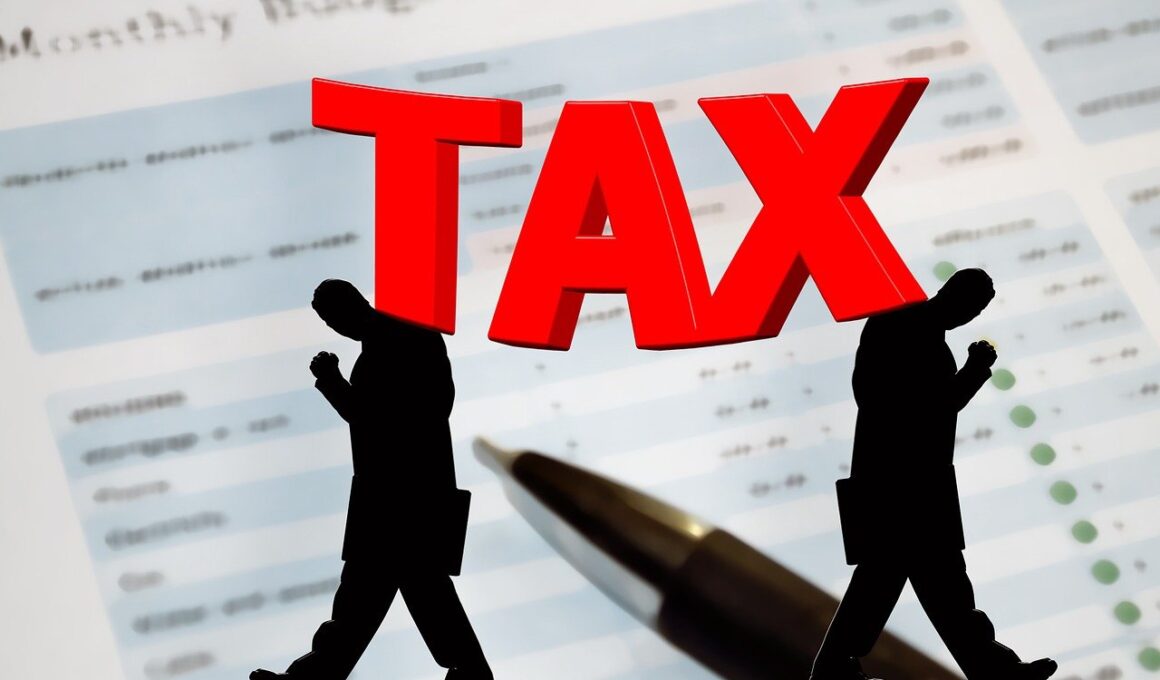Tax Reform: Balancing Revenue and Growth
Tax reform is a significant aspect of fiscal policy that aims to balance revenue generation with economic growth. The objective is to create a tax system that is fair, efficient, and conducive to investment. Policymakers often face challenges when designing tax reform strategies because they must consider various economic factors, public opinions, and political implications. A well-structured tax reform can help reduce inequality, encourage entrepreneurship, and stimulate job creation. These reforms often involve altering tax rates, broadening tax bases, and eliminating inefficient tax concessions. When properly executed, tax reform can enhance government revenues without stifling economic activity. Historically, countries that have undertaken comprehensive tax reforms have seen improved economic performance. Strategic tax adjustments ensure that revenues collected can fund crucial public services. However, it is essential to note that while increasing taxes on wealthier individuals can yield significant revenue, it may also disincentivize investment. Therefore, policymakers need to find a balance, ensuring that taxes support the fiscal environment while promoting business growth. This delicate balance is crucial in designing tax reform proposals that effectively serve the public interest while encouraging economic vitality.
The Importance of Comprehensive Tax Reforms
Comprehensive tax reforms are critical for creating a sustainable economic environment. By addressing fairness and efficiency, these reforms adjust the tax structure in ways that reflect current economic realities while fostering growth. One goal of tax reform should be to close loopholes that predominantly benefit higher-income individuals and large corporations. This includes evaluating various deductions and credits to streamline the tax code. Ensuring that all citizens contribute fairly to government revenues can help reduce public debt and fund essential services. Furthermore, a transparent tax system enhances public trust and compliance. An effectively balanced tax policy also incentivizes businesses to expand and hire more employees, driving economic growth. Policymakers often utilize studies and economic modeling to predict the potential impacts of reforms on revenue and economic activity. It is also crucial to engage with various stakeholders, including businesses, labor organizations, and the general public. By fostering a spirit of collaboration, policymakers can develop tax reforms with broad support that reflect shared economic values. In this context, education around tax obligations can lead to improved compliance and fairness, ultimately benefiting the entire economy.
The implementation of tax reform strategies can be complex, often requiring careful consideration of timing and execution. Delaying needed reforms can result in built-up inefficiencies and negatively impact economic growth. For example, reducing corporate taxes can encourage investment and spur growth, yet it may reduce immediate tax revenue. Striking the right balance in timing reforms is crucial to prevent economic disruptions. Policymakers must consider the current economic climate when proposing changes to tax structures. Additionally, there are often political ramifications of initiating tax reforms. Political parties frequently have differing opinions on tax policy, which can complicate legislative processes. Engaging in bipartisan dialogue is essential for advancing tax reform proposals. Robust public education campaigns can also help demystify tax changes for everyday citizens. It can enhance public understanding and support for new initiatives. Moreover, the design of these reforms must account for varying impacts on low- and middle-income individuals. Policymakers should ensure that any shifts in tax burdens do not disproportionately affect vulnerable populations. Overall, the successful implementation of tax reforms depends on a careful balance of policy objectives, stakeholder engagement, and ongoing evaluations of economic outcomes.
Evaluating the Impact of Tax Cuts
Evaluating the impact of tax cuts is essential for understanding the effectiveness of tax reform strategies. A careful analysis can provide insights into short-term versus long-term effects on economic growth and revenue generation. For instance, while tax cuts may immediately boost disposable income and encourage spending, they might also lead to long-term fiscal deficits if not balanced with revenue-raising measures. Policymakers often examine case studies to understand how tax cuts in specific regions have influenced job creation and business investments. Quantitative data and economic indicators can help gauge the effectiveness of tax policies regarding growth and equity. Furthermore, exploring the role of tax incentives for businesses is critical. These incentives can stimulate investment in infrastructure, research and development, and workforce training. Effective incentives are often paired with clear performance metrics to track their success over time. It is also beneficial to constantly reassess tax policies to gauge their relevance amid changing economic conditions. Thus, ongoing evaluation and adjustment of tax cuts are vital to ensure they align with broader fiscal objectives and create a thriving economy that benefits all citizens.
In addition to tax cuts, investment in social programs plays an essential role in shaping tax reform strategies. Policymakers need to consider how increased revenues can be redirected towards education, healthcare, and infrastructure. These investments can yield significant social and economic returns for communities, enhancing overall living standards. Targeted investments in education can lead to a more skilled workforce, while healthcare investments often increase productivity. They can also reduce long-term healthcare costs. Furthermore, funding infrastructure projects can create jobs and stimulate local economies, bringing about enduring growth. Balancing tax reform with adequate funding for these programs requires a nuanced approach. This includes understanding the interdependencies between tax policies and public service funding. Engagement with community leaders can provide valuable input on the needs of the population. Policymakers should consider not only the quantitative aspects of reforms but also the qualitative impacts on citizens’ lives. Transparency in how tax revenues are allocated can enhance public support for reforms. Ultimately, an integrated approach to tax reform that prioritizes social investments can lead to a more equitable society, fostering a climate of growth and vitality that benefits everyone.
International Perspectives on Tax Reforms
Viewing tax reforms through an international lens can offer valuable insights for policymakers. Countries around the world implement diverse strategies in their tax systems, often shaped by unique economic environments and social structures. Some nations adopt flat tax systems, while others employ progressive rates aimed at wealth redistribution. Learning from these varied models enables policymakers to identify best practices and potential pitfalls in tax reform efforts. For example, Scandinavian countries are often cited for their robust welfare states funded by high tax rates combined with efficient public services. In contrast, some developing countries face challenges such as tax evasion and limited administrative capacity. International organizations, such as the OECD, provide guidelines and frameworks that can assist countries in reforming their tax systems. Thus, collaboration and exchange of ideas can lead to more effective reforms that address local needs. Additionally, examining how tax policies affect global competitiveness is crucial. Policymakers must consider how domestic reforms will impact foreign direct investment. In summary, a broader understanding of international tax reform experiences can help devise strategies tailored to local contexts and ensure alignment with global economic trends.
Finally, continuous engagement with the public is vital for the success of tax reform initiatives. Public acceptance can make or break ambitious tax reform proposals. Policymakers should prioritize transparent communication, helping citizens understand the rationale behind tax changes and expected outcomes. Engaging in dialogue can shape informed perspectives and encourage civic participation in discussions around fiscal policy. Public forums, consultations, and surveys can provide citizens with platforms to voice their opinions and concerns. Additionally, leveraging digital platforms can enhance outreach efforts, making information accessible to a broader audience. Policymakers may also consider conducting impact assessments to present potential consequences of reform proposals. By illustrating how reforms could enhance community welfare and economic opportunities, public support may be bolstered. Education initiatives aimed at improving financial literacy can further empower citizens to grasp tax changes and their implications for personal finances. As trust builds through consistent communication, the likelihood of successful implementation increases significantly. Thus, ensuring that tax reforms resonate with public expectations can promote fiscal stability and economic growth while enhancing the quality of governance.





